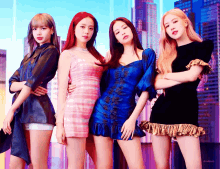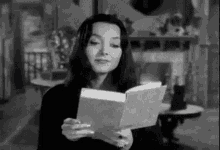If you watch TV, movies, or just generally don't live under a rock, you've probably come across some familiar female tropes in pop culture: "cool girl," "manic pixie dream girl," etc. Here is a quick debrief on what they are and why they're more trouble than their worth.
Let us slide into your dms 🥰
Get notified of top trending articles like this one every week! (we won't spam you)Cool Girl
Chances are if you've spent countless hours trying to be raunchy, effortlessly hot, and "one of the guys", you've probably gone through an "I'm not like other girls" phase (don't worry, we all did). First christened in Gillian Flynn's book and subsequent movie, Gone Girl, the trope of the cool girl is the personification of this burnished fantasy.
How To Be a Cool Girl
Flynn puts it best:
"Men always say that as the defining compliment, don’t they? She’s a cool girl. Being the Cool Girl means I am a hot, brilliant, funny woman who adores football, poker, dirty jokes, and burping, who plays video games, drinks cheap beer, loves threesomes and [censored] [censored], and jams hot dogs and hamburgers into her mouth like she’s hosting the world’s biggest culinary [censored] while somehow maintaining a size 2, because Cool Girls are above all hot.
Hot and understanding. Cool Girls never get angry; they only smile in a chagrined, loving manner and let their men do whatever they want. Go ahead, sh*t on me, I don’t mind, I’m the Cool Girl."
The Cool Girl in Popular Culture
Donna Pinciotti from That 70s Show (1998-2006): A pretty tomboy model who likes to wrestle with the boys.
Robin Scherbatsky from How I Met Your Mother (2005): Enjoys drinking Scotch with guys, loves smoking and guns, hates commitment, and almost always showing cleavage.
Black Widow in MCU (Marvel Cinematic Universe): Extremely badass fighter who attracts guys and danger.
Rachel Jansen in Forgetting Sarah Marshall (2008): Very chill and inclined to just cut loose and hang, giving the male lead a time to shine.

Take the Quiz: Which BLACKPINK member are you?
Find out which BLACKPINK member you resemble the most!
Manic Pixie Dream Girl
The Manic Pixie Dream Girl or MPDG, is a trope coined by film critic Nathan Rabin after seeing Kirsten Dunst, who played an optimistic and bubbly flight attendant, in Elizabethtown. Since then, it has become a well-known pop-culture cliché.
How To Be a Manic Pixie Dream Girl
In Rabin's words, a MPDG is...
"..that bubbly, shallow cinematic creature that exists solely in the fevered imaginations of sensitive writer-directors to teach broodingly soulful young men to embrace life and its infinite mysteries and adventures."
These "pixie" like characters are pretty, outgoing, and #quirky; a female romantic lead who exists for the sole purpose of teaching the male characters how to lighten up and enjoy their lives.
The Manic Pixie Dream Girl in Action
Claire Colburn in Elizabethtown (2005): A super bubbly, fantastical flight attendant who helps the depressed male protagonist find his way.
Summer in 500 days of Summer (2009): Quirky, light, and cute, influencing the male lead to embrace life by the end of the movie. This one's a bit different because Summer is not actually an MPDG; Tom, the main character and viewer perspective, just sees her as one.
Sam in Garden State (2004): A whimsical and mentally troubled young woman who assists the main guy in his character arc.
Femme Fatale
Funny how beautiful and powerful women are categorized as villains, huh? The alluring femme fatale is a long-standing antagonist character birthed in film noir of the 1940s and 50s crime films.
How To Be a Femme Fatale
Think slinky black dress, cigar in hand, pointing a gun at the man she supposedly loved. A femme fatale is beautiful, bold, and bad to the bone, usually bringing about the destruction of the main man in her story. She wears her sexuality proudly, using it as a tool to feed her greed and lust.
The Femme Fatale in Action
Brigid O'Shaughnessy in The Maltese Falcon (1941): Enters the detective's life as an innocent woman, then seduces and manipulates him before being sent off to jail.
Phyllis Dietrichson in Double Indemnity (1944): Captured in countless zoomed-in shots of her body and clothing, this menacing and masterful woman becomes the object of the male lead's sexual obsession.
Cersei Lannister in Game of Thrones (2011-2019): The fiery and deadly queen, notorious for her cruel, scheming personality.
#Strong Female Character
I get it – What's wrong with a strong female character? As a young girl, I practically idolized strong female characters I saw on TV, especially since girls usually had a secondary role in most movies and shows. However, the truth is, strong female characters are nowhere near as fleshed out as their male equivalents.
How To Be a Strong Female Character
Usually, strong female characters have masculine traits. They're ripped and fit, wear masculine clothing, have short hair. The term "strong female character" has become a shorthand for a "girl with guns," sometimes solely existing for the purpose of blowing stuff up. They often don't have a romantic interest because they're strong, and if they do, it's portrayed as a lesbian relationship.
Actress Emilia Clarke articulates the main issue of a #strong female character:
“If it’s not strong, what is it? Are you telling me there’s another option, that there’s a weak option? You think a lead in a movie is going to be a weak woman? It just doesn’t even bear having the conversation, so enough already with the strong women, please.”
The Strong Female Character in Action
Trinity from The Matrix (1999): She really doesn't have character or does much in the movie at all beyond aiding the fight scenes by shooting people.
Dr. Ellie Sattler in Jurassic Park (1993): Takes no BS, happily digging into dino poo to help the mission. Although she's supposed to be strong and intelligent, she doesn't get the opportunity to let her strength and wit triumph. In fact, she just screams and runs around a lot.
Rey from the Star Wars franchise: She's physically strong and good at basically everything, making her extremely two-dimensional.
So?
There's a pretty clear trend, right? Cool girls are just projections of male fantasies. MPDGs exist solely to help the male lead get his arc.
Femme fatales are a product of the male crime writer's insecurity. Strong female characters are strong because they're masculine. These archetypes are misogynistic and sexist, reinforcing the belief that everything revolves around men.
First and foremost, none of these characters would even be noticed by their love interest if they weren't attractive. Played by insanely beautiful actresses, the characters set an impossible standard by which we judge the people in our day-to-day life. The characters they play become unrealistic, imaginary objects, and reinforce the myth they contribute to.
Sometimes, they can become a convenient catch-all for unusual women in film, erasing the differences between them. Throughout film history, the male-dominated perspective has left audiences with underdeveloped female characters who highlight the problematic idea that women are there to help men change and that men need women to change.
Like Clementine says in Eternal Sunshine of the Spotless Mind:
''Too many guys think I’m a concept, or I complete them, or I’m gonna make them alive. But I’m just a f***ed-up girl who’s looking for my own peace of mind. Don’t assign me yours."
The bottom line? Cool, quirky, powerful, and strong women aren't the problem. But having their coolness, quirkiness, power, and strength exist for some male fantasy––that's an idea that we need to bury. Forever.











